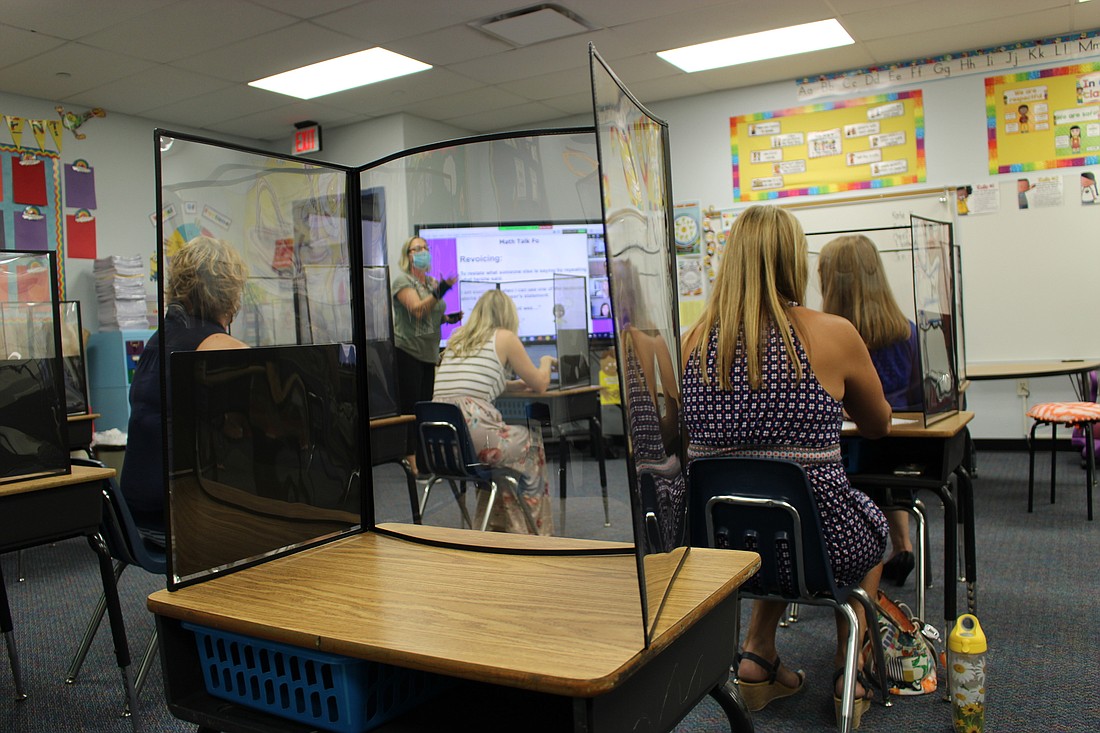- December 12, 2025
-
-
Loading

Loading

As the end of first semester draws to a close, questions about second semester are still fast arising, and many of them do not yet have an answer.
On Nov. 30, Gov. Ron DeSantis and Education Commissioner Richard Corcoran released an emergency order stating all Florida schools will remain open for the remainder of the year, and students struggling with remote learning will be asked to return to brick-and-mortar classrooms.
The district now has until Dec. 15 to submit a draft of a plan that addresses how it will handle a variety of issues. Key among them are encouraging an in-person, five-days-a-week structure; progress-monitoring of students affected by the “COVID slide”; and intervention when at-home students are struggling.
Remote students who are failing to meet grade standards must be transitioned back to face-to-face instruction. Superintendent Brennan Asplen said the district is currently working on a template for the proper procedure in such instances.
“If a student is not doing well, they are just really failing in that virtual world, we will have conversations with them that say, ‘Look, you need to come back to school and be with our teachers,’” Asplen said.
First, parents and guardians will be notified in writing of their child’s progress and any associated risks. The district will then make a plan for that student to return to campus.
Parents can choose to have their child remain at home by providing the district with written notification saying they received the information and still intend to remain in the remote learning environment. However, administrators warn that decision could mean no credit or even retention for their child.
Administrators are still working through the creation of individualized plans for students who are struggling and how best to address professional development, two other requirements of the executive order.
One thing that is clear, however, is that more students will be returning to the classroom.
Asplen said the district currently has about 80%, or 34,500, of its students back in the classroom, up from 70% when school opened in August. He expects that number to increase by the time the semester begins.
“All along, we’ve been talking to parents trying to get kids back in school, especially if they’re not doing well,” Asplen said.
Although he said it’s good that students are getting back to classrooms, the switch raises more questions about the district’s concurrent learning method.
Currently, almost every teacher in every grade level has some form of concurrent learning classroom throughout the day. However, as need decreases, Asplen said the district is considering options that would see most teachers shift away from concurrent models.
Administrators are considering options that would allow one or two teachers at each grade level to teach remote-only classes while other teachers would focus solely on face-to-face classrooms.
That model does create confusion for students who are asked to quarantine, Asplen acknowledged, because they would either have to be switched to a remote-only course, or each of the students’ teachers would have to switch to a concurrent model for the duration of the quarantine.
Board member Bridget Ziegler questioned whether it would be possible to have one remote class per grade level or course across several schools to allow a full online course. She said many teachers are struggling with the concurrent model and a change needs to be made in the new semester.
“I’ve heard from many concerned educators who say, ‘You tell me to jump and I’ll say how high,’ and they’ve jumped in and truly been remarkable,” Ziegler said. “But the burnout is real.”
Though administrators discussed the possibility of a cross-school remote class, Executive Director of Elementary School Education Chris Renouf said it isn’t feasible for young students.
“At the elementary level, we are really looking at how to minimize the amount of students and teachers in concurrent models by having one or two teachers per grade level in the concurrent model,” Renouf said. “It’s much more manageable rather than having the whole team doing it.”
Ziegler also questioned whether additional planning time would be allotted for teachers to cope with the concurrent model. Asplen said at the moment he’s unsure how many classrooms will use the concurrent model in the new semester, so he’s hesitant to grant extra planning days when a substitute could be used to give the concurrent teachers planning time instead.
“I think our concurrent teachers need the extra time, definitely, but it might look a little bit different than how we did it in the first semester depending on where we are,” Asplen said.
Board member Jane Goodwin said she’d also like to see changes in the new semester when it comes to parental education. She said she’s still hearing from parents who don’t understand the district’s concurrent model or how to access the parental portal for more information.
“I think we’re missing the boat with parents,” Goodwin said. “They have fears and they have concerns and maybe we’re not answering those.”
She said she’d like to see the district brainstorm ways to connect with parents, whether it’s informational sessions through Zoom, in-person meetings or educational videos.